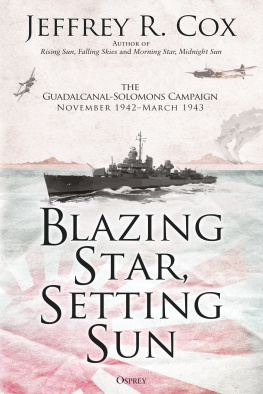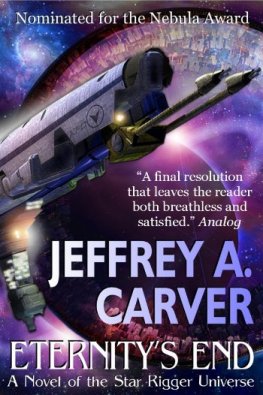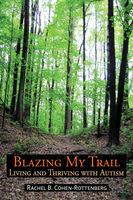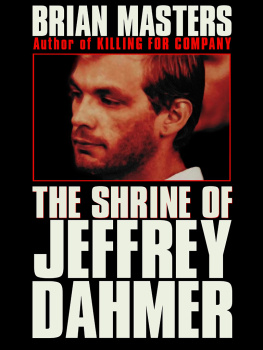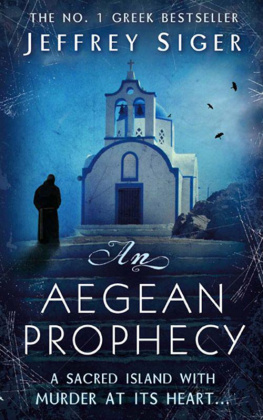Jeffrey R. Cox - Blazing Star, Setting Sun
Here you can read online Jeffrey R. Cox - Blazing Star, Setting Sun full text of the book (entire story) in english for free. Download pdf and epub, get meaning, cover and reviews about this ebook. publisher: Bloomsbury Publishing Plc, genre: Non-fiction. Description of the work, (preface) as well as reviews are available. Best literature library LitArk.com created for fans of good reading and offers a wide selection of genres:
Romance novel
Science fiction
Adventure
Detective
Science
History
Home and family
Prose
Art
Politics
Computer
Non-fiction
Religion
Business
Children
Humor
Choose a favorite category and find really read worthwhile books. Enjoy immersion in the world of imagination, feel the emotions of the characters or learn something new for yourself, make an fascinating discovery.
- Book:Blazing Star, Setting Sun
- Author:
- Publisher:Bloomsbury Publishing Plc
- Genre:
- Rating:4 / 5
- Favourites:Add to favourites
- Your mark:
- 80
- 1
- 2
- 3
- 4
- 5
Blazing Star, Setting Sun: summary, description and annotation
We offer to read an annotation, description, summary or preface (depends on what the author of the book "Blazing Star, Setting Sun" wrote himself). If you haven't found the necessary information about the book — write in the comments, we will try to find it.
Blazing Star, Setting Sun — read online for free the complete book (whole text) full work
Below is the text of the book, divided by pages. System saving the place of the last page read, allows you to conveniently read the book "Blazing Star, Setting Sun" online for free, without having to search again every time where you left off. Put a bookmark, and you can go to the page where you finished reading at any time.
Font size:
Interval:
Bookmark:



Contents
The Solomon Islands, August 1942January 1943 |
Marine Facilities at Guadalcanal, late September 1942 |
The First Naval Battle of Guadalcanal, November 13, 1942 |
The Second Naval Battle of Guadalcanal, November 1415, 1942 |
The Battle of Tassafaronga, November 30, 1942 |
As May 9, 1883, turned into May 10, 1883, the lighthouse keeper at the southeastern entrance to the Soenda Strait a place sailors called Java Head had felt a slight rumbling: an earthquake, it seemed. Not a large one; it was barely noticeable, especially in the East Indies, where earthquakes big and small were, and still are, common. This one seemed different, though. Unlike the normal instances when two tectonic plates collide, this tremor seemed to reverberate through the air, not the ground. Like a whisper. The lighthouse seemed to shift on its foundations. And the water
For an instant, the water seemed to freeze and turn white.
Five days later there was another rumbling, stronger, more widely felt.
This strange phenomenon continued for almost two weeks. Then even stranger things ominous things started happening.
On the morning of May 20, the people of Batavia (as Jakarta was then known) felt these weird tremors, but they also heard a distant booming sound, like artillery from where, they could not tell. The next day the tremors continued and reports filtered in of smoke rising miles into the air from an old volcano in the Soenda Strait thought long extinct.
Known in the language of the Dutch rulers of the East Indies as Perboewatan, the volcano was not a visually impressive one. It was one of three volcanic cones that formed what sailors referred to as The Island With The Pointed Mountain, an uninhabited island that looked something like an old boot with a tapered shaft. Perboewatan was the northernmost and shortest volcano, perched on top of the toe of the boot.
The rumblings continued into mid-June. Then several loud explosions caused a thick black cloud to cover the island, seemingly ending the commotion, at least for the most part.
August 22 found Captain W.J. Watson and the crew of the commercial sailing ship the Charles Bal sailing from Belfast to Hong Kong. As it approached the Soenda Strait from the west, Watson noticed the water looked unusual and had a strange white appearance. As they got closer to the strait, thick black clouds formed and frequent lightning struck. The morning of August 26, 1883, the Charles Bal passed Java Head and entered the Soenda Strait itself.
Captain Watson took note of the many islands ahead in the strait. One of them, The Island With The Pointed Mountain, was almost completely hidden by more thick black clouds. As the Charles Bal headed across the strait toward the Java coast, the crew watched aghast as a giant ash column shot up from the island, followed by a thunderous boom, which later became an almost continuous roar. The crew found themselves facing a dark squall, which was, in fact, an ash cloud one so thick that day immediately turned into night. Complete blackness engulfed the Charles Bal , illumination provided only by the constant if uneven strikes of lightning. Ash and large chunks of pumice rained down on the ship, choking and blinding the crewmen trying to shovel it overboard, before it could make the ship top-heavy and capsize it. The thunder of what sounded like a thousand cannons echoed through the heavy, sulfur-soaked air.
[F]earful and truly awful, was how Captain Watson described it. But not fearful or truly awful enough to turn around and head away from it, it would seem. The skipper doesnt appear to have asked if getting his cargo to Hong Kong on time was worth sailing through this . The Charles Bal groped her way along, all alone, in the darkness, passing The Island With The Pointed Mountain somewhere to port, glimpsing maybe the lighthouse near the town of Anjer (Anyer) on the Java coast ahead. Only then did Captain Watson order the ship to turn around.
And head straight for The Island With The Pointed Mountain.
Exactly why, Captain Watson never really explained, which suggests that he and his crew simply wanted to see the volcano. Around 11:00 pm, Watson and the crew of the Charles Bal were rewarded by finally being able to see through the ash and lightning, dead ahead of them, The Island With The Pointed Mountain, now some 11 miles away. In the midst of her titanic tectonic convulsions: Chains of fire appeared to ascend and descend between it and the sky, apparently on the northern part of the island between Perboewatan and the middle volcanic cone, a series of peaks known as Danan, while on the [southwestern] end there seemed to be a continued roll of balls of white fire, which were probably coming from the Pointed Mountain itself, the tapered shaft of the boot, the southernmost and by far the tallest cone, called Rakata.
Having satiated her curiosity, the Charles Bal and her crew turned back toward the north to head out.
As dawn of August 27 approached, Captain Watson was able to make out the lighthouse at the coastal town of Anjer and later the town itself. But his hails brought no response. As far as he and his crew could tell, normally friendly Anjer was deserted. The Charles Bal moved on.
The atmosphere seemed to clear up, for a time. Around midmorning Watson and his crew heard a fearful explosion from the direction of The Island With The Pointed Mountain, now some 30 miles away. Then the darkness quickly returned. With utter blackness overhead, like a blanket blocking all sunlight, the Charles Bal endured a pelting of hot mud that continued for most of the rest of the day. The darkness would not clear for another two days.
Captain Watson and the crew of the Charles Bal escaped as the only people to see firsthand even part of this cataclysmic phase of the volcanos eruption and live. They did not see the fearful explosion; no one could have witnessed it and survived. Fearful explosion was something of an understatement. It was heard 3,000 miles away off Africa. Though the Charles Bal was lucky enough to have been shielded somewhat by a land mass, ships 40 miles away from the explosion suffered entire crews with ruptured ear drums. Anyone near the explosion would have been liquefied by the shockwave.
If all this was not bad enough, the blasts caused tsunamis to roll into the Soenda Strait. Anjer itself was wiped out, leveled to its building foundations. Hundreds of villages were decimated. Countless corpses, of man and beast, were washed through the Soenda Strait and into the Indian Ocean, visible for weeks afterward.
After the tsunamis had subsided the next morning, a coastal steamer poked its way through a Soenda Strait that was almost unrecognizable from just 24 hours earlier. The strait was now filled with new ash islands, some more permanent than others. Other, older islands were nowhere to be seen, including The Island With The Pointed Mountain. All that remained was a sliver of The Pointed Mountain, Rakata, looking like half a pyramid, sheared roughly down the middle.
No one knows exactly why the island disappeared was it blown apart or did it collapse into a caldera? only that what sailors called The Island With The Pointed Mountain was just gone. But the locals name for the island Krakatau though misspelled in a news telegram announcing the catastrophe, became instantly immortal, infamous, a symbol of death, destruction, and disaster on a biblical scale: Krakatoa.
Font size:
Interval:
Bookmark:
Similar books «Blazing Star, Setting Sun»
Look at similar books to Blazing Star, Setting Sun. We have selected literature similar in name and meaning in the hope of providing readers with more options to find new, interesting, not yet read works.
Discussion, reviews of the book Blazing Star, Setting Sun and just readers' own opinions. Leave your comments, write what you think about the work, its meaning or the main characters. Specify what exactly you liked and what you didn't like, and why you think so.

